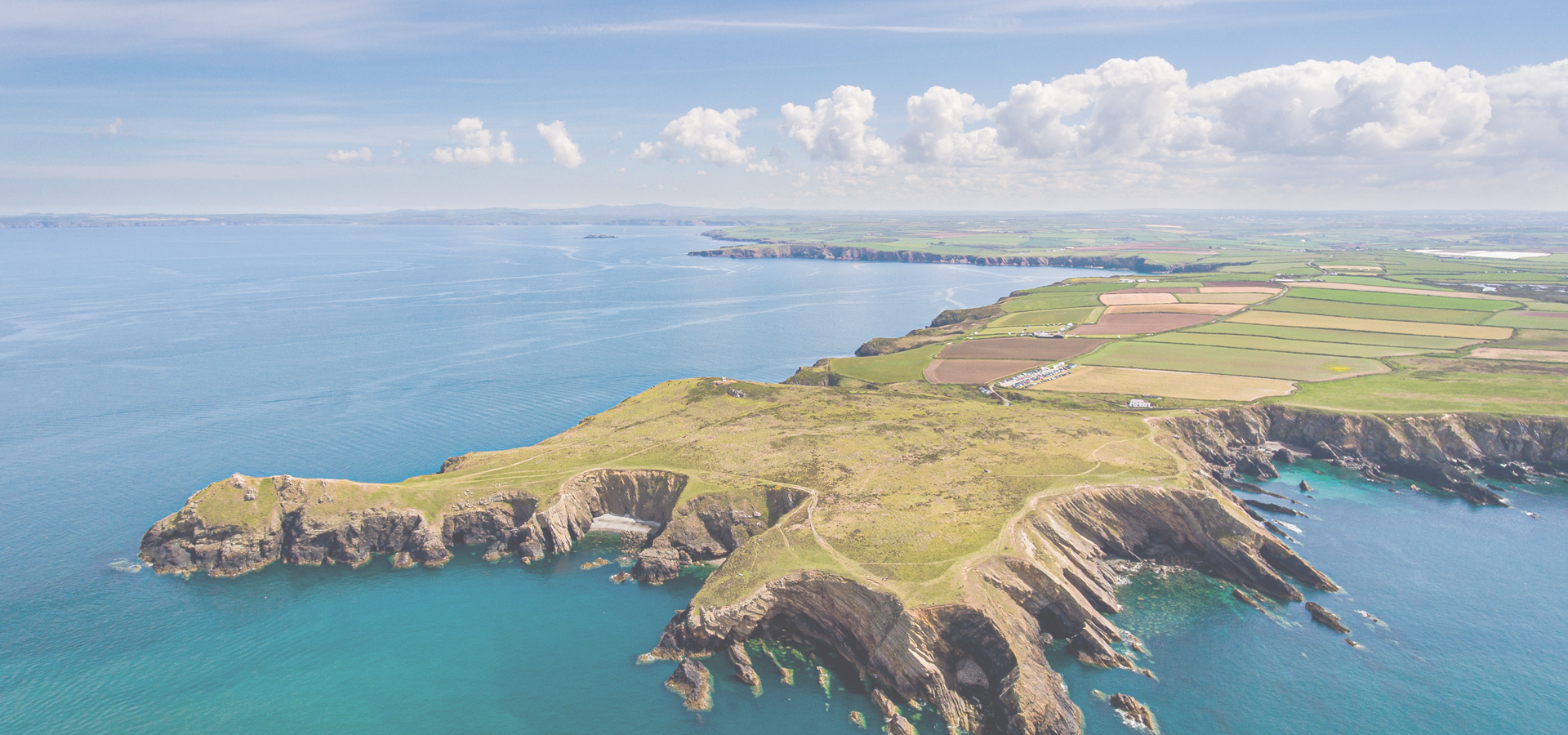Pembroke, Pembrokeshire, Wales, United Kingdom
🏴 Pembroke is a town in Pembrokeshire, Wales. It is both a community and one of the larger towns in the county. The names of both the town and the county have a common origin; both are derived from the Cantref of Penfro: Pen = "head" or "end", and bro = "region", "country", "land", which has been interpreted to mean either "Land's End" or "headland".
Pembroke features a number of historic buildings, town walls, complexes and Pembroke Castle which was the birthplace of Henry Tudor, who became Henry VII of England.
Pembroke Castle, the substantial remains of a stone medieval fortress founded by the Normans in 1093, stands at the western tip of a peninsula surrounded by water on three sides. The castle was the seat of the powerful Earls of Pembroke and the birthplace of King Henry VII of England. Gerald de Windsor was the first recorded Constable of Pembroke. Pembroke town and castle and its surroundings are linked with the early Christian church. Following the final extension of the castle about 1254 the town was extended and defensive perimeter walls erected around the edge of the town. The walls survive on their medieval foundations, although much rebuilt over the centuries. A great many of the town's original medieval burgage plots survive and are divided by early stone walls that are of significant national importance.
Monkton Priory, sited on a hill across the river from the castle, founded in 1098 by Arnulf de Montgomery and granted by him to the Benedictine order, has very early foundations and retains much of the Norman walls of the nave. The choir and sanctuary were renovated in the 19th Century. Monkton Hall, close by the Priory church, is regarded as the oldest domestic building in Pembrokeshire and possibly Wales and is thought to have been the guesthouse for visitors to the Priory.
The first stone building in the town was a defensive tower, now known as the Medieval Chapel, at 69a Main Street and built on a cliff edge. There are the remains of a great hall to the north and recently filled-in arched cellars. The building was thought to have been later used as an early church as the layout is the same as St. Govan's Chapel and was used by John Wesley in 1764 to preach Methodism. In 1866 it became the brewery for the York Tavern which was briefly Oliver Cromwell's headquarters at the end of the Siege of Pembroke during the English Civil War.
The town's main bridge across the River Pembroke, which also acts as a dam, crosses and constrains the millpond. The first bridge was constructed to house a tide mill, originally granted to the Knight's Templar in 1199. The last mill building was destroyed by fire in 1956.
On both banks of the Pembroke River to the west of the castle are many remains of early activities. The North Shore Quarries are relatively complete as are the remains of medieval and Elizabethan slipways where wooden vessels were built before the industrial dockyard and admiralty town was built on the grid pattern of Pembroke Dock. There is a very early complete graving dock in what was Hancock's Yard.
During the English Civil War, the strategic maritime shire was primarily in the control of the parliamentary forces which aspired to prevent communication to Ireland.
At Pennar Flats there was an early submarine base used for experiments in submarine warfare. Three of the houses on the then foreshore, part of the shipyard before the Admiralty Dock Yard was built, are still standing but are heavily altered.
The ferry port of Pembroke Dock is 3 miles (4.8 km) to the north-west of Pembroke. It was established in 1814.
Pembroke town stands on the South Pembrokeshire limestone peninsula by the estuary of the River Cleddau, flanked on all sides by woodland and arable farmland. The town is 8 miles (13 km) south of the county town of Haverfordwest.
The town is centred on Main Street, which is the only street that is inside the original Pembroke town walls. Outside the walls, residential estates have been built to the north towards Pembroke Dock, to the east towards Lamphey, and to the south. To the west of the town lies the village of Monkton, which is included as part of the community of Pembroke.
The conurbation of Pembroke Dock and Pembroke is one of the major population centres of West Wales.
Deer Park, Marloes Beach, Haverfordwest, Pembrokeshire, Wales

Pembroke has a population of over 7,552 people. Pembroke also forms the centre of the wider Pembrokeshire county which has a population of over 122,439 people.
To set up a UBI Lab for Pembroke see: https://www.ubilabnetwork.org Twitter: https://twitter.com/UBILabNetwork
Twin Towns, Sister Cities Pembroke has links with:
🇩🇪 Bergen, Germany 🇲🇹 Pembroke, Malta🏴 Abingdon-on-Thames 51.678
🇳🇱 s-Hertogenbosch 51.683
🇳🇱 's-Hertogenbosch 51.69
🇩🇪 Hamminkeln 51.717
Locations Near: Pembroke -4.90843,51.6737
🏴 Haverfordwest -4.97,51.8 d: 14.7
🏴 Carmarthen -4.316,51.856 d: 45.5
🏴 Llanelli -4.193,51.787 d: 50.9
🏴 Bideford -4.207,51.02 d: 87.5
🏴 Swansea -3.941,51.623 d: 67
🏴 Barnstaple -4.06,51.08 d: 88.5
🏴 Port Talbot -3.827,51.61 d: 75
🏴 Aberystwyth -4.085,52.416 d: 99.9
Antipodal to: Pembroke 175.092,-51.674
🇳🇿 Dunedin 170.474,-45.884 d: 19288.1
🇳🇿 Christchurch 172.617,-43.517 d: 19089.4
🇳🇿 Invercargill 168.373,-46.413 d: 19252.8
🇳🇿 Canterbury 171.58,-43.543 d: 19073.7
🇳🇿 Queenstown 168.658,-45.033 d: 19137.6
🇳🇿 Wellington 174.767,-41.283 d: 18859.5
🇳🇿 Hutt 174.917,-41.217 d: 18852.2
🇳🇿 Lower Hutt 174.917,-41.217 d: 18852.2
🇳🇿 Richmond 173.183,-41.333 d: 18856.2
🇳🇿 Upper Hutt 175.05,-41.133 d: 18843
